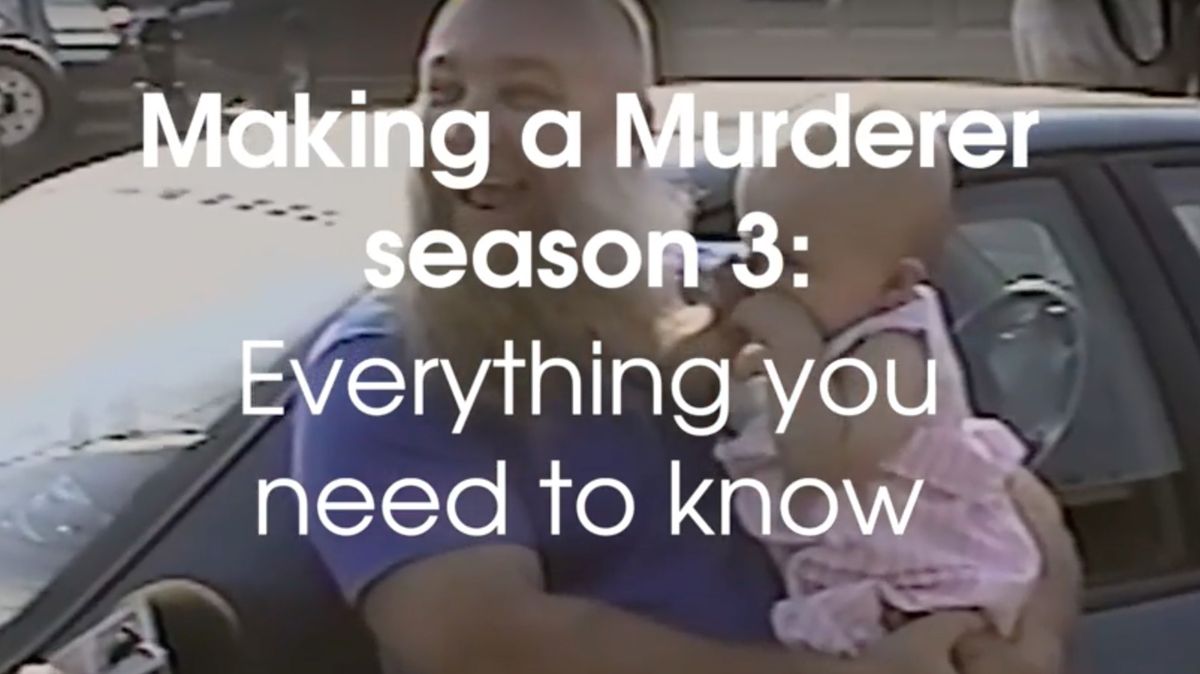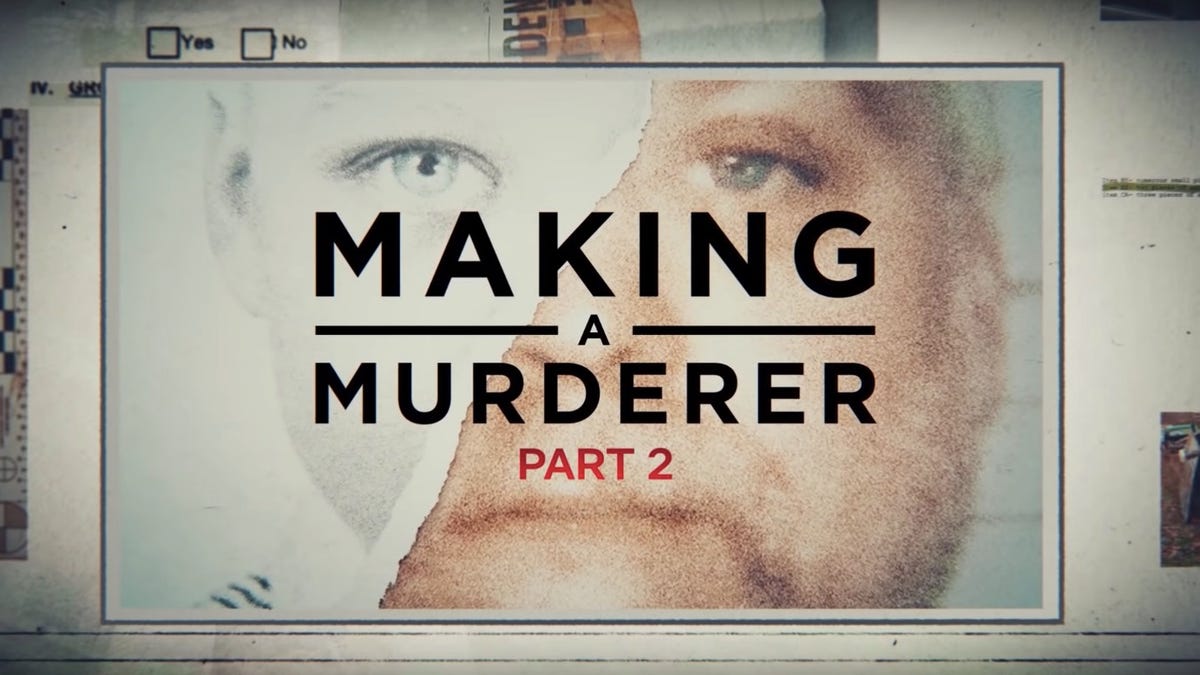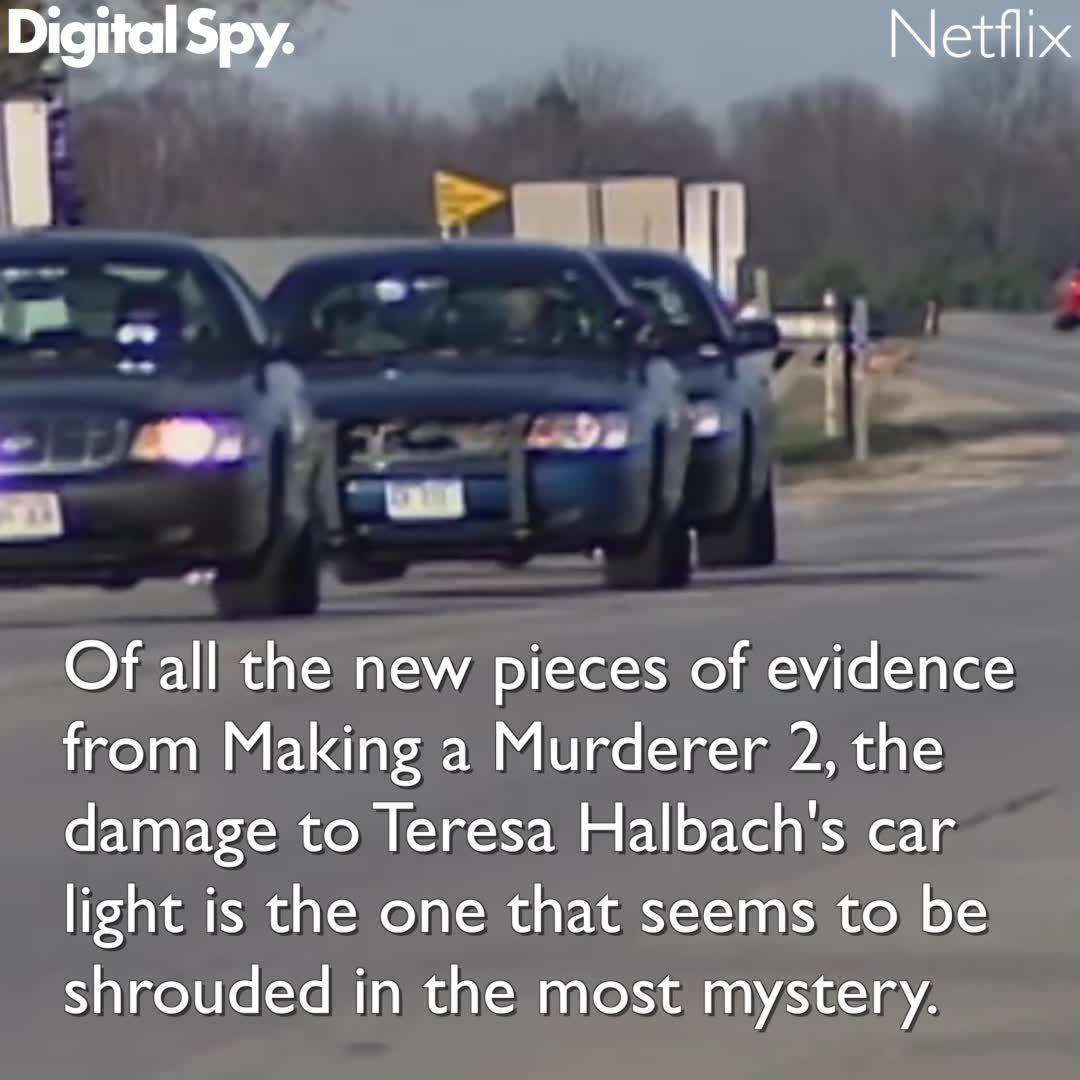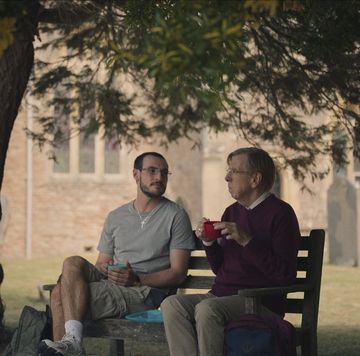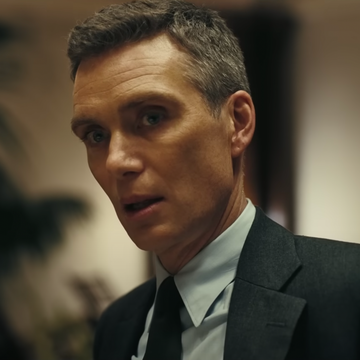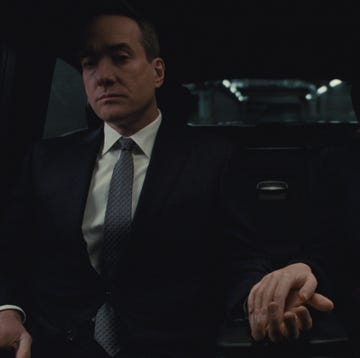Brendan Dassey's confession is one of the biggest talking points that's come out of Making a Murderer. Despite the fact that six judges, in total, have previously ruled that it was coerced, he still remains behind bars.
But with no DNA evidence used to convict him back in 2007, his trial was based on the words garnered from his interrogations. Many believe that he was coerced into confessing to a part in the murder of Teresa Halbach, while others have defended the confession as being true.
Digital Spy teamed up with an expert to analyse the interview footage from Brendan's original confession, in order to ascertain all the ways that it could be interpreted.
Linguistic expert Dawn Archer has an impressive CV of examining the language used by some of the world's most notorious criminals. She lends her expertise to Investigation Discovery's true-crime series Faking It: Tears of a Crime, where she helps to analyse police footage and TV appeals of criminals, providing analysis around speech patterns and the language being used in order to ascertain guilt or innocence. She is also a Linguistics Professor at Manchester Metropolitan University as well as working currently with UK police negotiators. You can see her in action here:
[youtube ]https://www.youtube.com/watch?v=d3576yTqmZE&t=13s[/youtube]Dawn watched the full available hours of Brendan Dassey's interview tapes, as well as analysing the transcripts, in order to gain a full picture of how the investigators structured their questions and, in turn, what can be drawn from Dassey's responses.
The Reid Technique: How can this be applied?
This is a method of questioning used in the United States. It's highly divisive; supporters of the Reid technique argue that it's useful when dealing with individuals who are unwilling to cooperate, while critics say that it can lead to false confessions from innocent people.
The method allows, or can even encourage, officers to adopt a "you're guilty" perspective at a certain point of the process, making it harder for interviewees to retract a confession at a later date.
"There's a mistaken belief that innocent people don't tend to confess, and so won't need to retract a confession," Dawn told Digital Spy. "Yet, as many high-profile cases – and lots of research studies – have shown, innocent people do confess to a crime they haven't committed."
So, could a presumption of guilt have played into Brendan's interrogation? Let's take a look.
Who dominated the conversation?
On March 1, 2006 two police officers – Special Agent Tom Fassbender and Investigator Mark Wiegert – interviewed Brendan Dassey.
Analysing the "turn count" (the number of times they each spoke during the interview), Dawn observed: "Not surprisingly, Dassey had the most turns – as he was asked questions by and was thus responding to two police officers.
"But his words-per-turn average was lower than both of the police officers' average – at 6 words per turn (compared with 15.4 for Fassbender and 11.5 for Wiegert)."
According to Dawn, this data can be read in two different ways depending on whether you're approaching it from a bias of believing innocence or guilt.
"Presuming guilt, you might conclude Dassey is keeping his responses to a minimum so he doesn't give himself away. You might then justify your conclusion by pointing out that Dassey also used statements like 'I don't know' and 'not that I know of', 43 times and 6 times respectively," she said.
"[If you] start from a premise of innocence, you might believe Dassey is struggling to provide information about what happened. At this point, you could put this (and many of the inconsistencies that emerge) down to Dassey's recognised limited cognitive ability and/or age," she added.
Did the interviewers steer the conversation?
We can explore this through one particular example, according to Dawn.
She pointed out that it was one of the investigators that first introduced the idea of "fire" into the interview, when Fassbender asked directly: "What about the fire?"
At least two explanations can be drawn from this, according to Dawn's expertise. "The first would be that it had come up in previous conversations the officers had with Brendan Dassey. If recordings of those conversations exist, it would be important to check that it was Dassey, and not the officers, who introduced this information... as well as noting in what sense the topic was introduced.
"A second, and not necessarily unrelated, hypothesis is that the officers were bringing it up themselves here, as the "fire" was an important component of the case." We know this to be true because of the bone evidence that was found, and the prosecution's theory regarding the burn pit.
Rather than providing a direct answer to this, Dassey responded with another question: "Do you mean if it was started or somethin'?" he asked, before answering for himself, "No it wasn't." He shook his head 'no' to affirm his own statement.
Fassbender intervened, stating: "We're not gonna go any further in this cos we need to get the truth out now. We know the fire was going..."
Dawn points out the significance of the use of 'we know', which he used again a little later in the conversation – along with the term 'we don't believe' – in order to contradict evidence Brendan had just given.
"Wiegert or Fassbender reminded the 16-year-old of the 'truth' theme they had already begun to establish. Weigert, for example, insisted that Brendan 'be honest' and that, as he'd 'told [him] before', it was 'the only thing' that was 'gonna help' him.
"He also stated, 'we already know what happened' followed by 'okay', which was enough to secure another head nod from Brendan," she said.
According to Dawn's findings, "Weigert [then] opted to develop their truth theme some more" by telling Brendan that his 'mum said [he]'d be honest with them'.
This would have exerted some moral/familial pressure upon Dassey, Dawn advised.
Weigert and Fassbender then appeared to confirm that Brendan's mum had told them she thought he knew more. "It is at this moment that Brendan changed his evidence," Dawn noted.
"Fassbender and Weigert repeatedly used words like 'truth, honest, honesty, honestly' and especially 'know' when interacting with Brendan Dassey," Dawn concluded.
To what extent did Brendan Dassey have "knowledge" of important details?
"Some observers who've watched the video and/or read the transcript of the 2006 police interview have pointed out that the officers were careful to ensure their style of interaction was not aggressive. Rather, they are argued to have gradually but firmly coaxed Dassey into providing more and more detail that only he and Avery (as the perpetrators) would be able to provide.
"Other observers have said that some of the details that were later used in his court case did not originate with Dassey. Rather, the police officers fed them to Dassey, who then elaborated on them," Dawn said.
One detail that falls into this category relates to the questions surrounding who shot Teresa.
During a discussion over who "cut her", Weigert asked: "So Steve stabs her first and then you cut her neck? [to which Brendan nods "yes"] What else happens to her in her head?"
Dawn then observed: "Fassbender then asserted that it was 'extremely, extremely important' that Dassey provide this information – to the point of affecting whether they could believe him or not.
"This was one of the occasions, however, when Brendan made clear he couldn't remember anything else," Dawn added, highlighting his use of the word "all" in the following exchange:
FASSBENDER: It's extremely, extremely important you tell us this, for us to believe you.
WIEGERT: Come on Brendan, what else?
FASSBENDER: We know, we just need you to tell us.
BRENDAN: That's all I can remember.
"Weigert wasn't satisfied with this, and opted – at this point – to ask Dassey somewhat pointedly, 'Who shot her in the head?'
"Note that this assumes that not just someone but either Dassey or Avery had shot Teresa in the head (a 'fact' that was later supported by the finding of a bullet on the floor of the garage)," Dawn said.
Dawn points out that Dassey went on to blame Avery, answering Weigert's pointed question, over who shot Teresa, with "He did". Fassbender goes on to ask Dassey, "then why didn't you tell us that?" at this point which, Dawn notes, might signal some frustration that Dassey hadn't offered this information to them without any prompting.
In response to this question, Dassey stated "cos I couldn't think of it". The officers might have picked up on the 16-year-old's use of thinking here, given they were careful to stress to Dassey, at certain points, that he should only tell them things that were true, and not make things up.
Unfortunately, they didn't – even though use of the word 'thinking' potentially signals a different cognitive process than remembering. Instead, Fassbender used a declarative question to get Dassey to confirm that he was now remembering it. Seemingly satisfied with Dassey's head nod at this point, Fassbender then instructed Dassey to tell them about that – thereby demonstrating two related beliefs he probably held at this point: That (i) Dassey was able to tell them how Avery shot Teresa because (ii) Avery had shot her in front of Dassey.
As part of his description of 'what happened', Brendan went on to state that Avery shot Teresa outside. Dawn highlighted the following exchange as significant:
BRENDAN: That he shot her with his .22.
WIEGERT: You were there though?
BRENDAN: Yeah.
WIEGERT: Where did this happen?
BRENDAN: Outside.
WIEGERT: Outside? Before? Tell me when it happened?
BRENDAN: When we brung her outside ta throw her in the fire.
"As the questioning continued, Dassey went on to provide inconsistent information in respect to how many times Avery shot Teresa and whether he also shot Teresa, in addition to where she was shot," Dawn surmised.
It's important to note that Brendan originally claimed that the shooting happened "outside", not in the garage – which is where a bullet was eventually found.
So was Brendan Dassey's confession true or false?
"The first indication from Dassey that he may have made up some of his confession was to his mum shortly after the interview ended. This occurred even though Barb's turns suggest that she – like the officers – believed Avery had made him do it," Dawn told us.
This particular exchange went as follows:
BARB: What did he do to you to make you do it?
BRENDAN: Nothin'.
BARB: Did he force you to do it? (Brendan shakes head "no")
BRENDAN: I didn't want to.
BARB: Ohh. (door opens and closes) Are you regrettin' it now? (pause) You had a whole life ahead of you Brendan. Just because he's so demanding, doesn't mean you gotta do the stuff he says. Right?
BRENDAN: Where am I going?
BARB: Where do you think you're going?
BRENDAN: I don't know?
BARB: You're goin' to juvie, that's where you're going, to a juvie jail. About 45 minutes away.
BRENDAN: Yeah but I gotta question?
BARB: What's that?
BRENDAN: What'd happen if he says something his story's different? Wh- he says he, he admits to doing it?
BARB: What do you mean?
BRENDAN: Like if his story's like different, like I never did nothin' or somethin'.
BARB: Did you? Huh?
BRENDAN: Not really.
BARB: What do you mean not really?
BRENDAN: They got to my head.
BARB: Huh?
BRENDAN: ....say anything.
BARB: What do you mean by that? (pause) What do you mean by that Brendan? (pause).
Noting Dassey's first question to his mother, about where he would be going, Dawn observed: "Those holding a guilty paradigm might use this to argue that he hinted he was innocent to his mom shortly after confessing as he wanted to avoid juvie jail.
"Those holding a truth paradigm might counter argue that he should have known – some near-four-hours later – that he wasn't going to be released, given what he had confessed to... [pointing] to him not really fully understanding the situation he was in."
Looking at Dassey's comment about the investigators getting to his head, Dawn said: "As strategies like the Reid technique reveal, it is possible to exert subtle pressure on to people so that they confess. However, even when using the Reid technique officers are meant to apply such subtle pressure once they have evidence of guilt..."
Dawn concludes: "That the officers were convinced of Dassey's guilt seems not to be in doubt. Indeed, their language throughout confirms their guilty perspective."
What's more, their post-interview exchange with Dassey's mother backs up this conclusion:
BARB [to the police officers]: Were you pressuring him?
WIEGERT: Who are you talking about?
BARB: Him.
WIEGERT: What do you mean, pressuring him?
BARB: In talking to him.
WIEGERT: No we told him we needed to know the truth. We've been doing this job a long time Barb and we can tell when people aren't telling the truth. And, in my opinion, he'd never be able to live with himself if he didn't tell somebody. There's no way, he could've live with that. Nobody could live with that. I think Brendan knows that.
We must point out that, according to the US legal system, the conviction against Brendan Dassey (which is based on his own confession) has been upheld.
Dawn won't reveal whether she believes Brendan's confession was true or not beyond her observations above. But we've already drawn our own conclusions, right?
Making a Murderer Part 2 is now streaming on Netflix.


